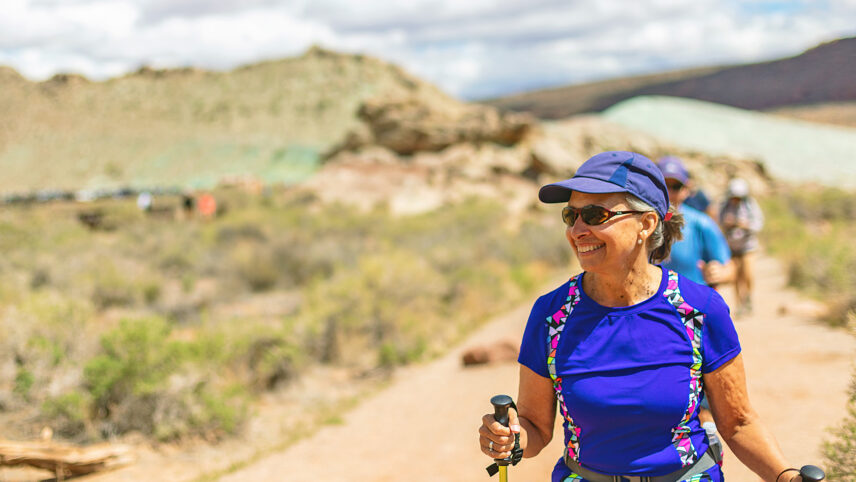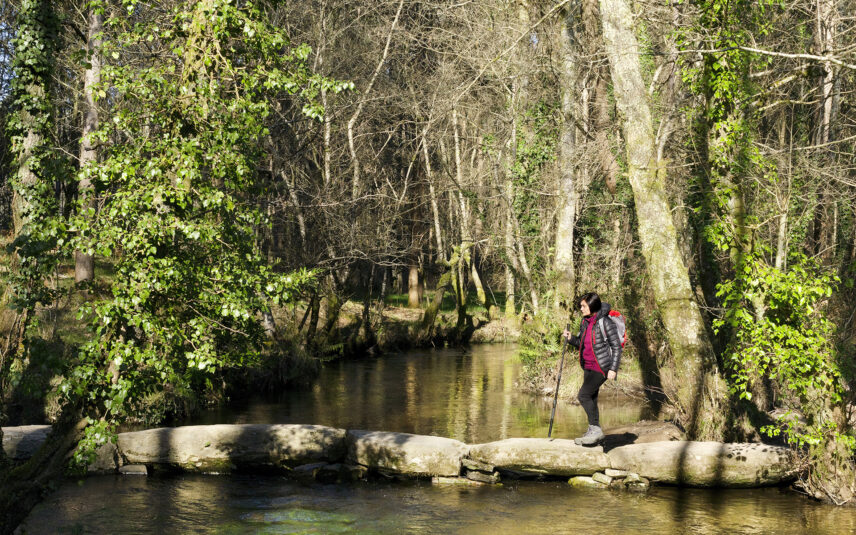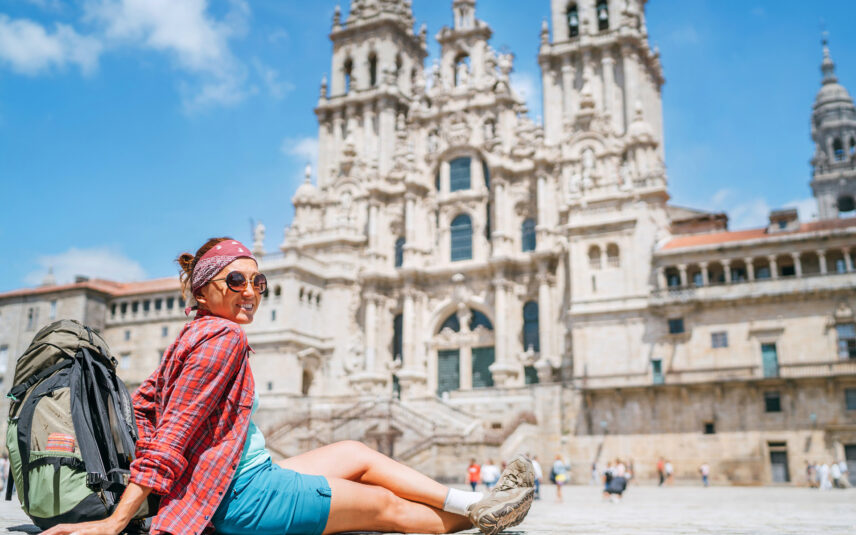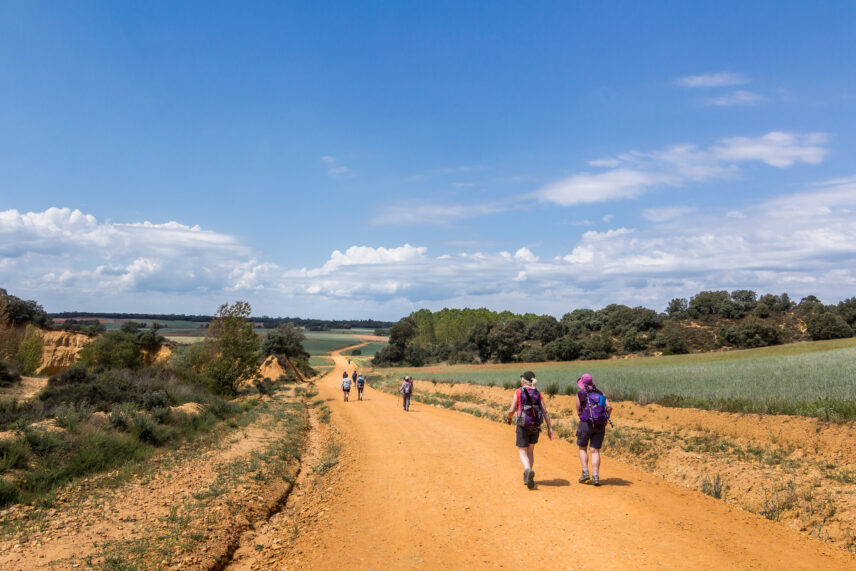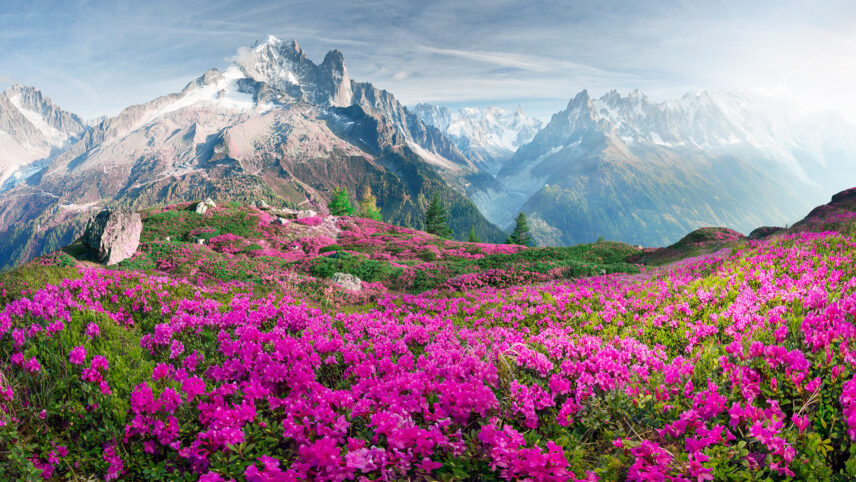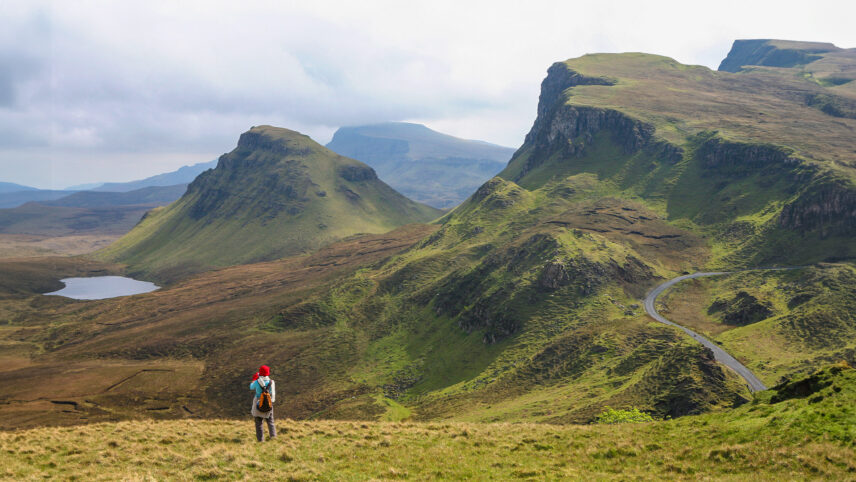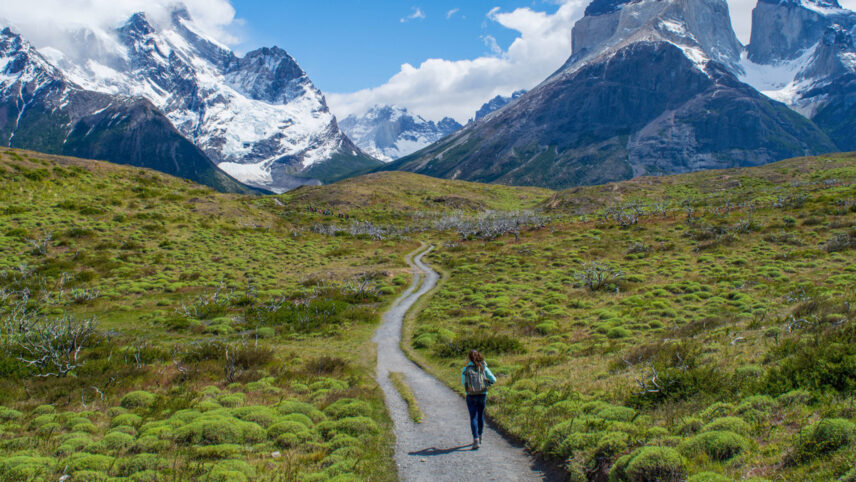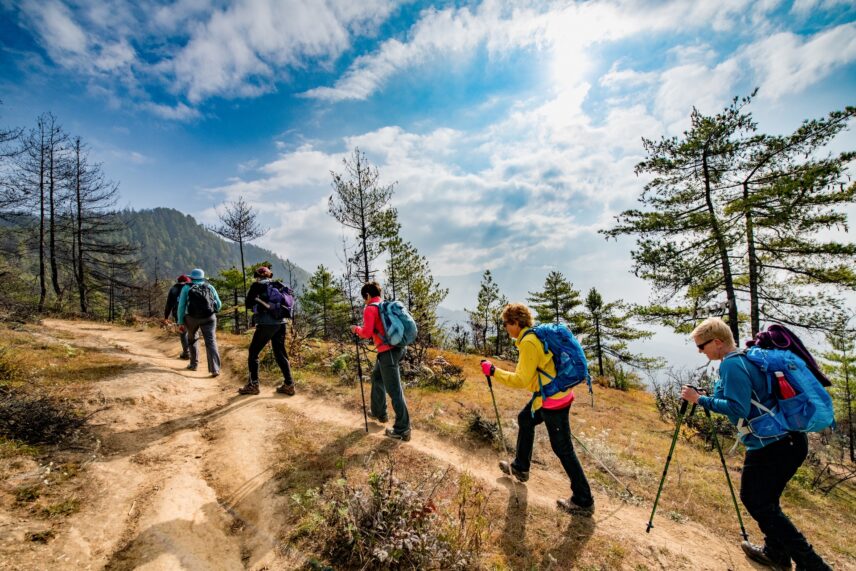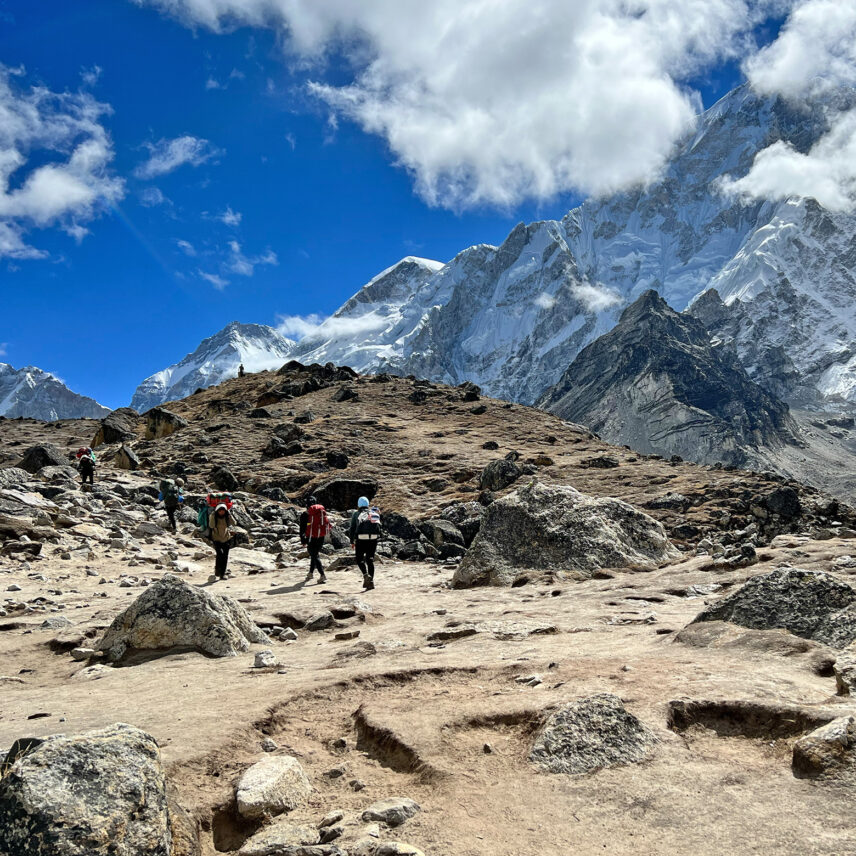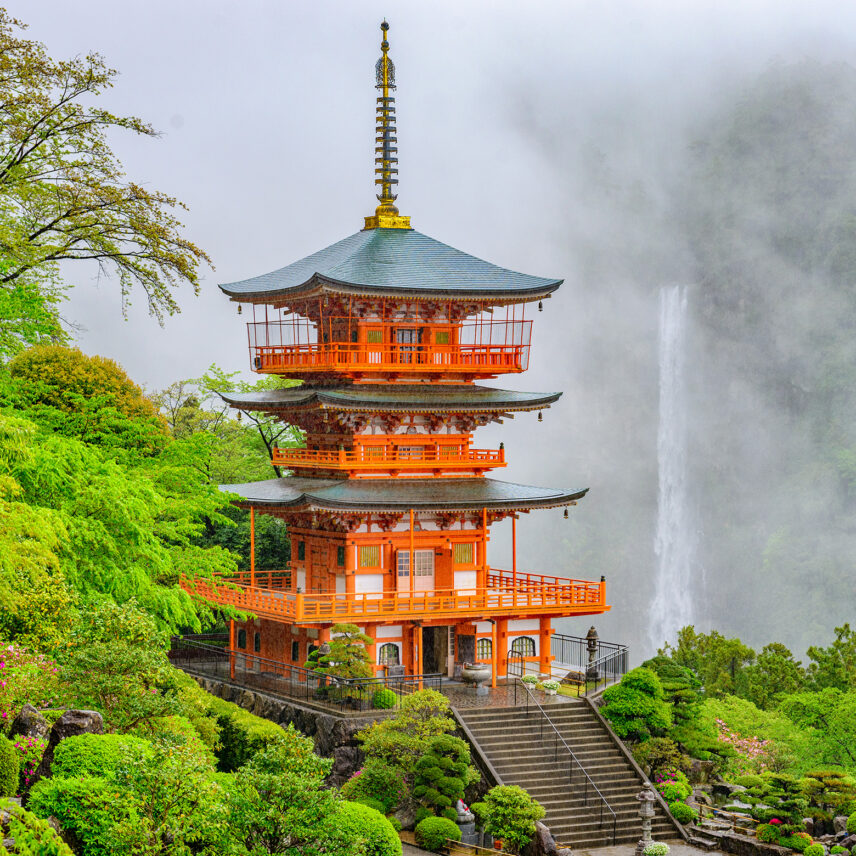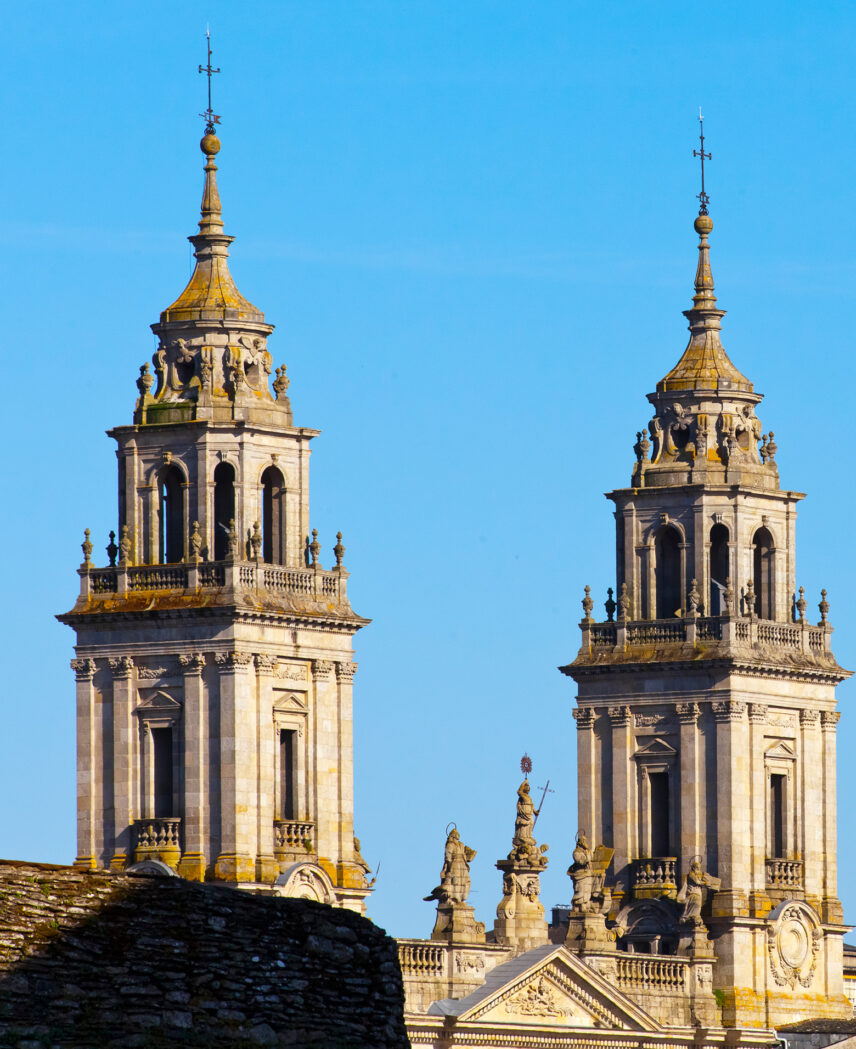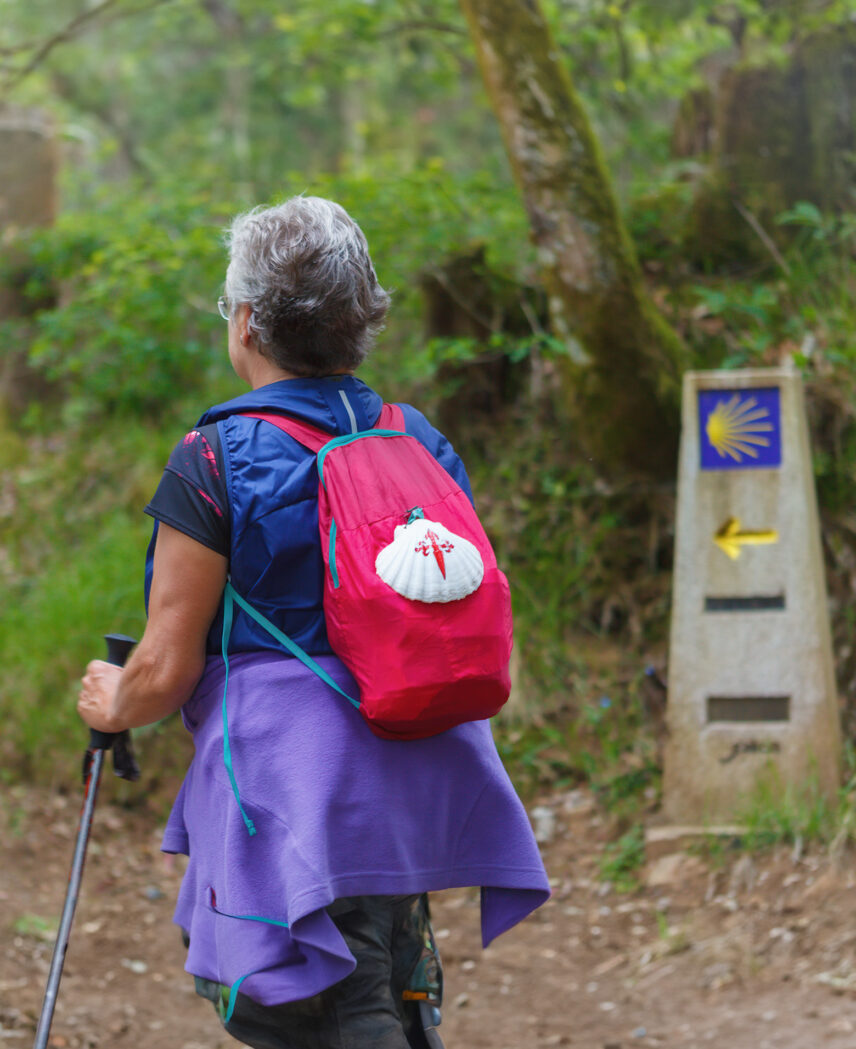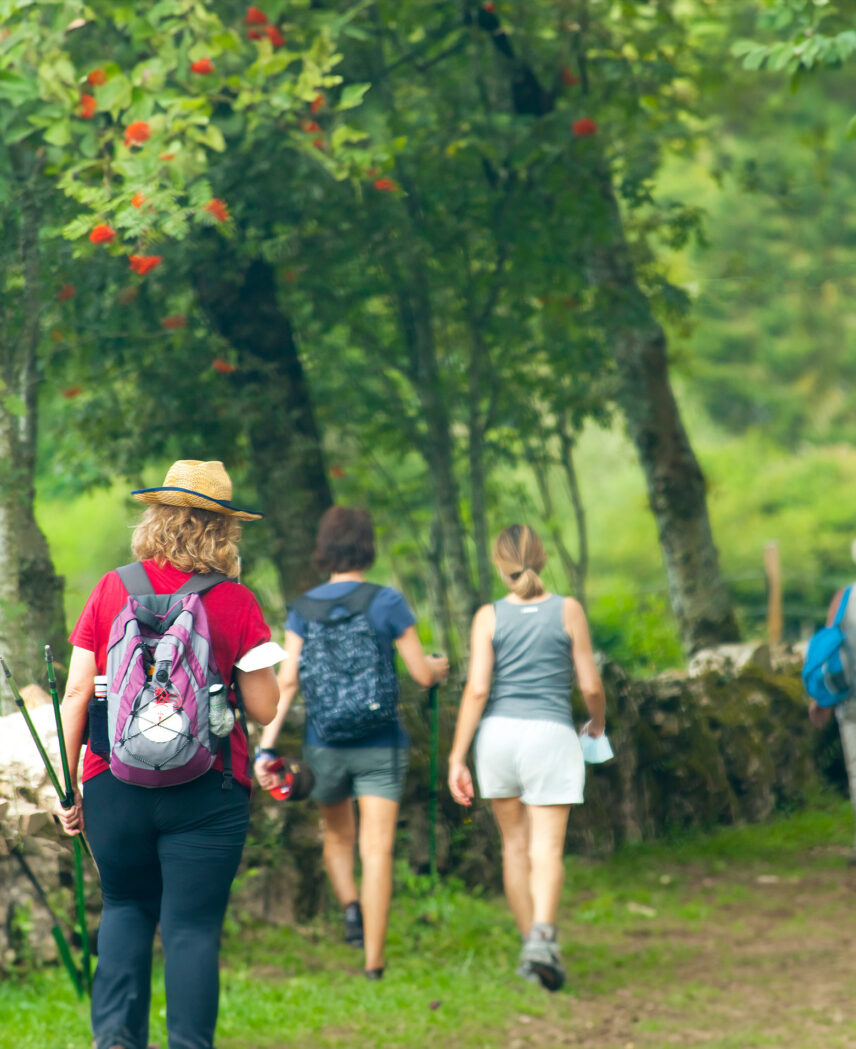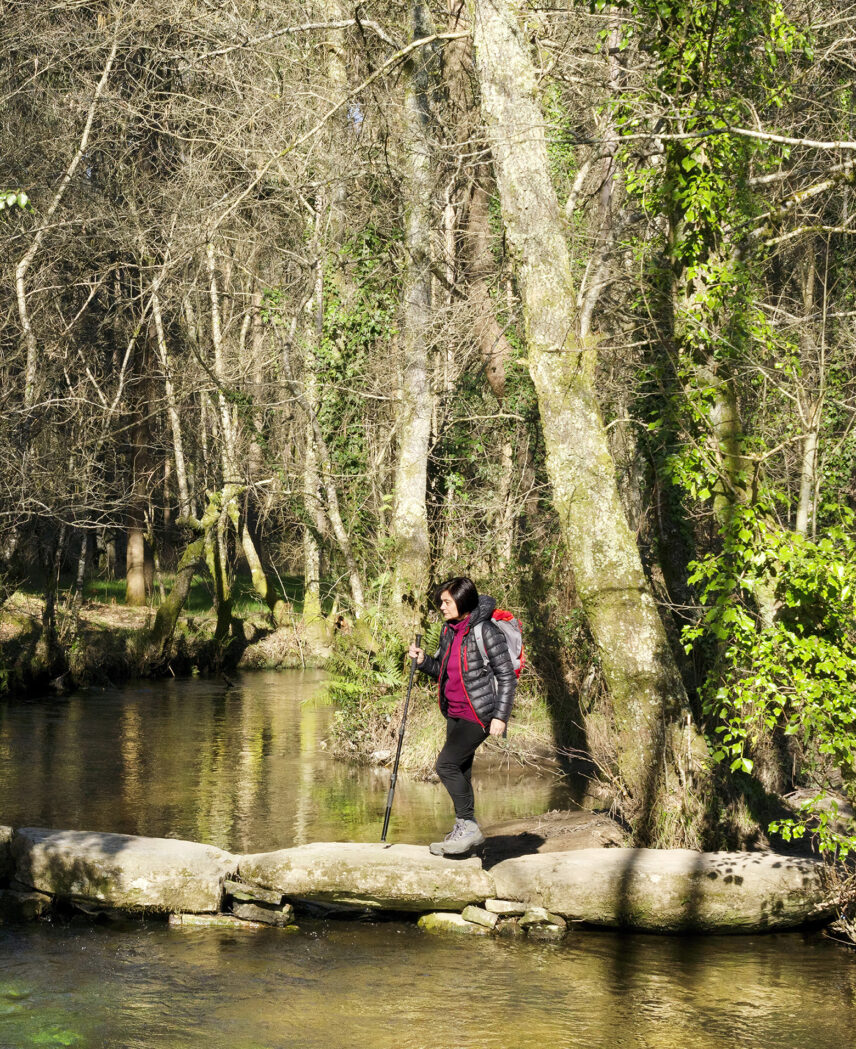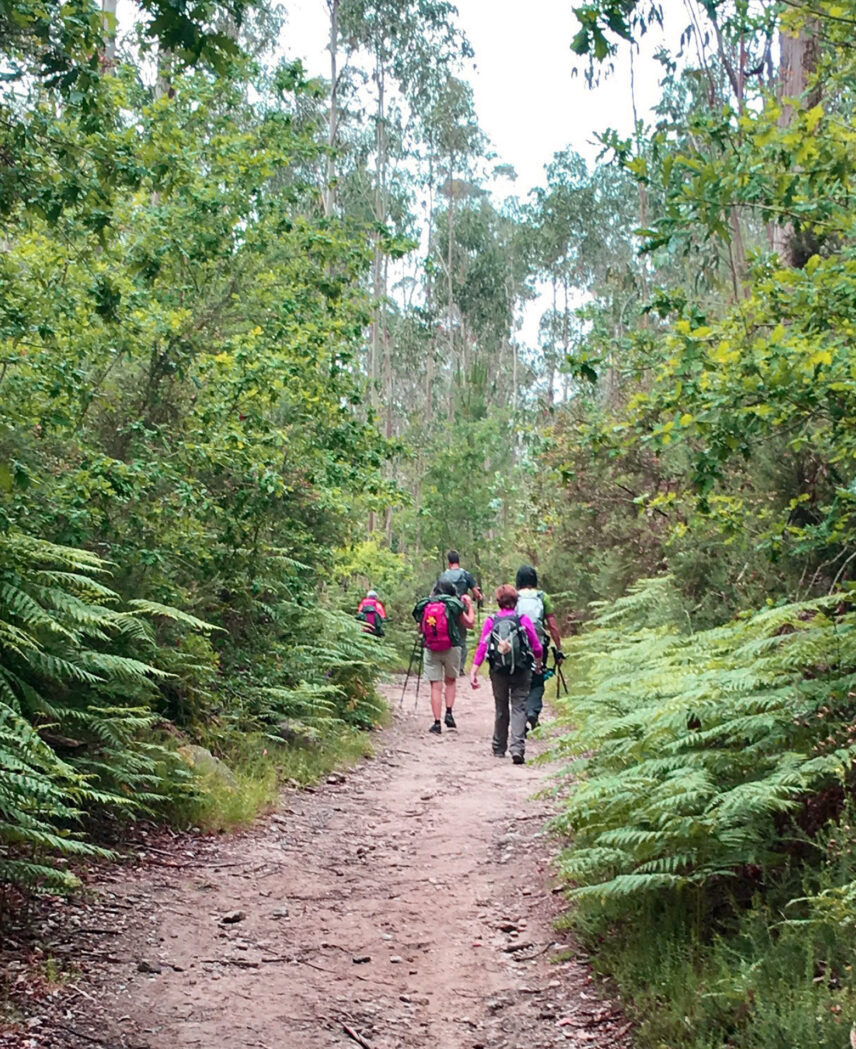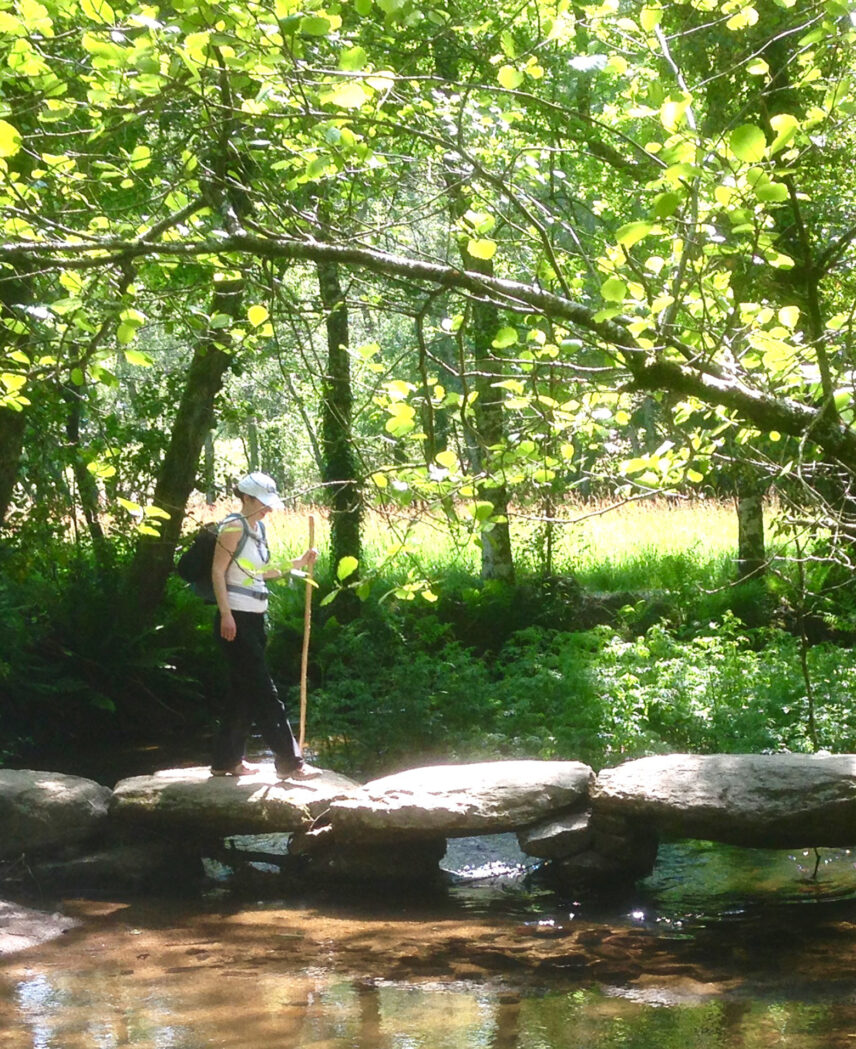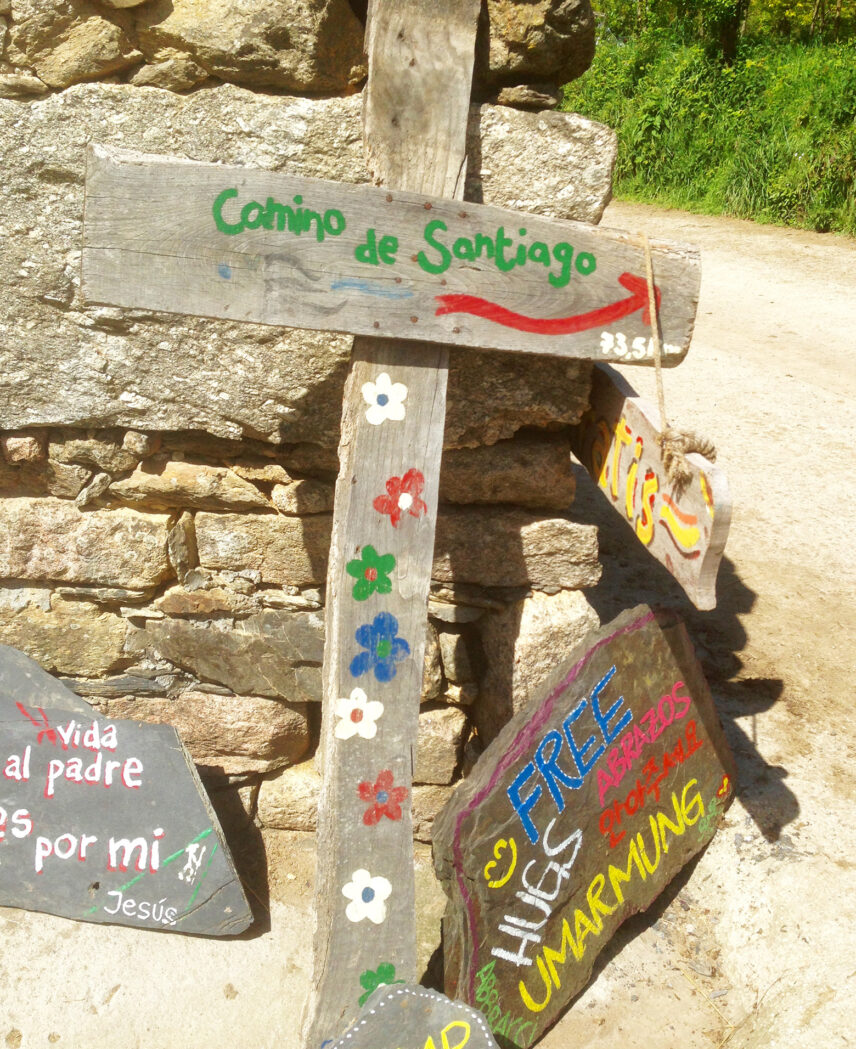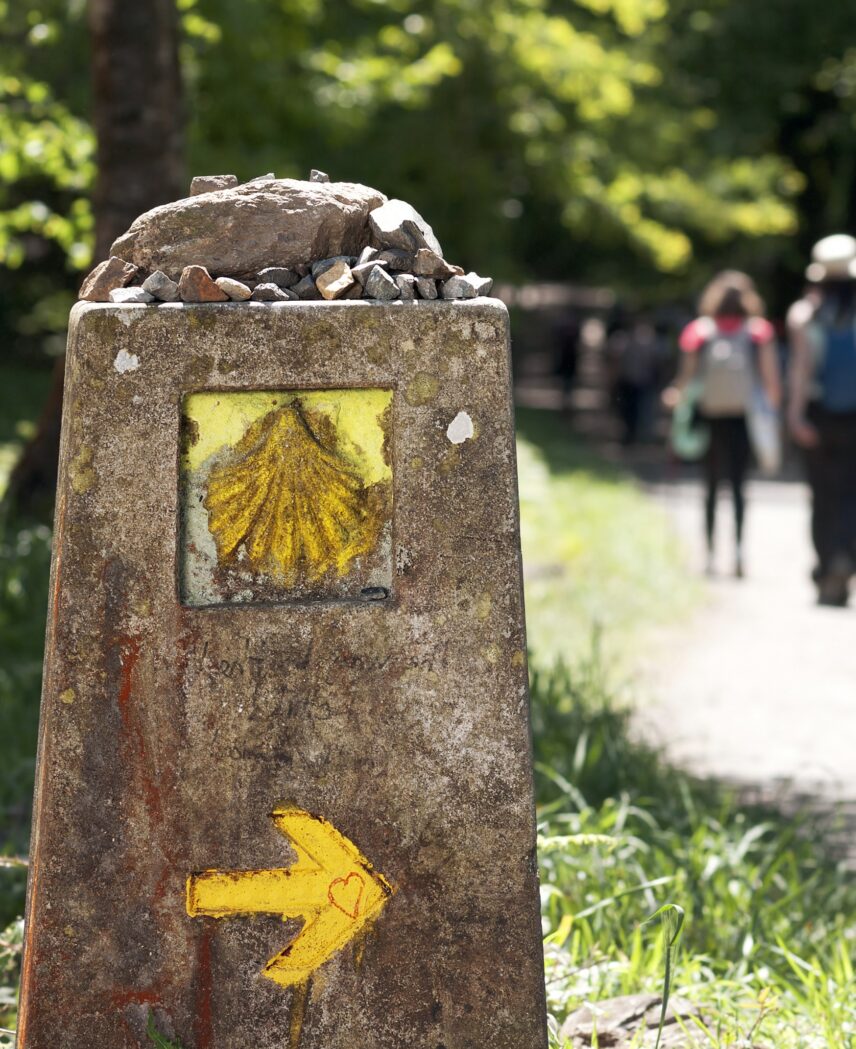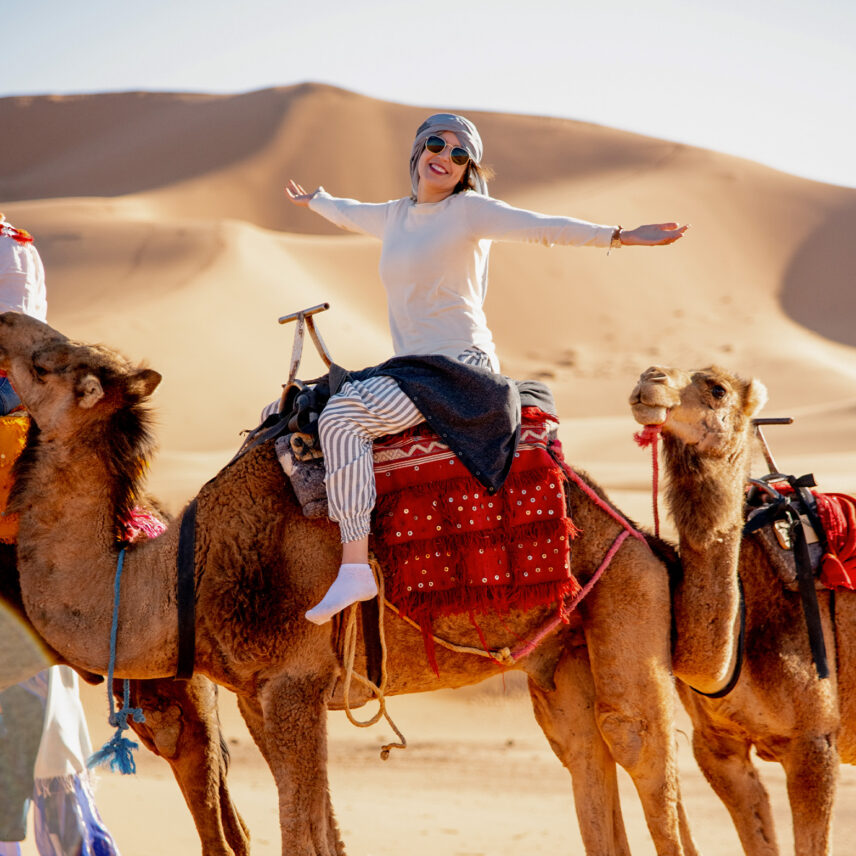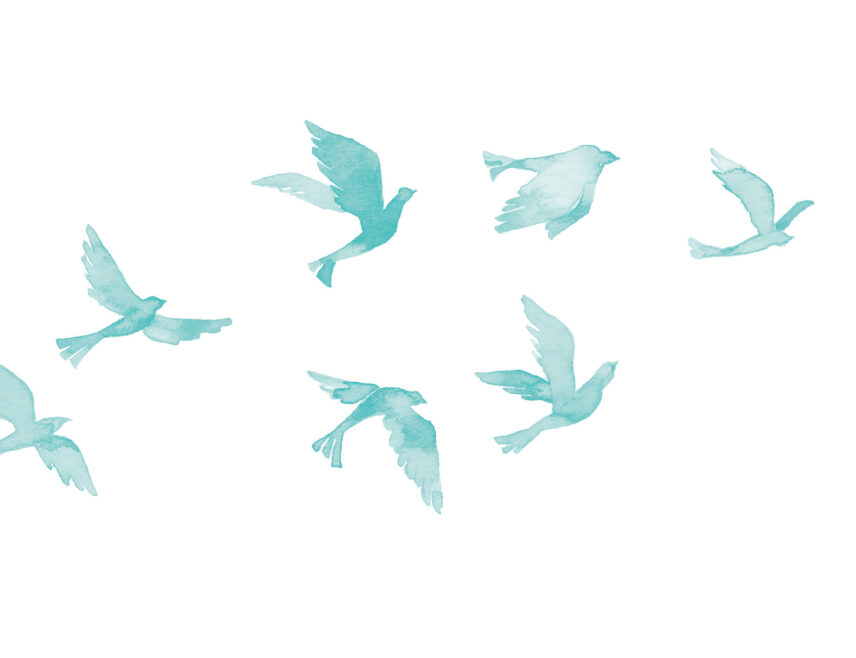
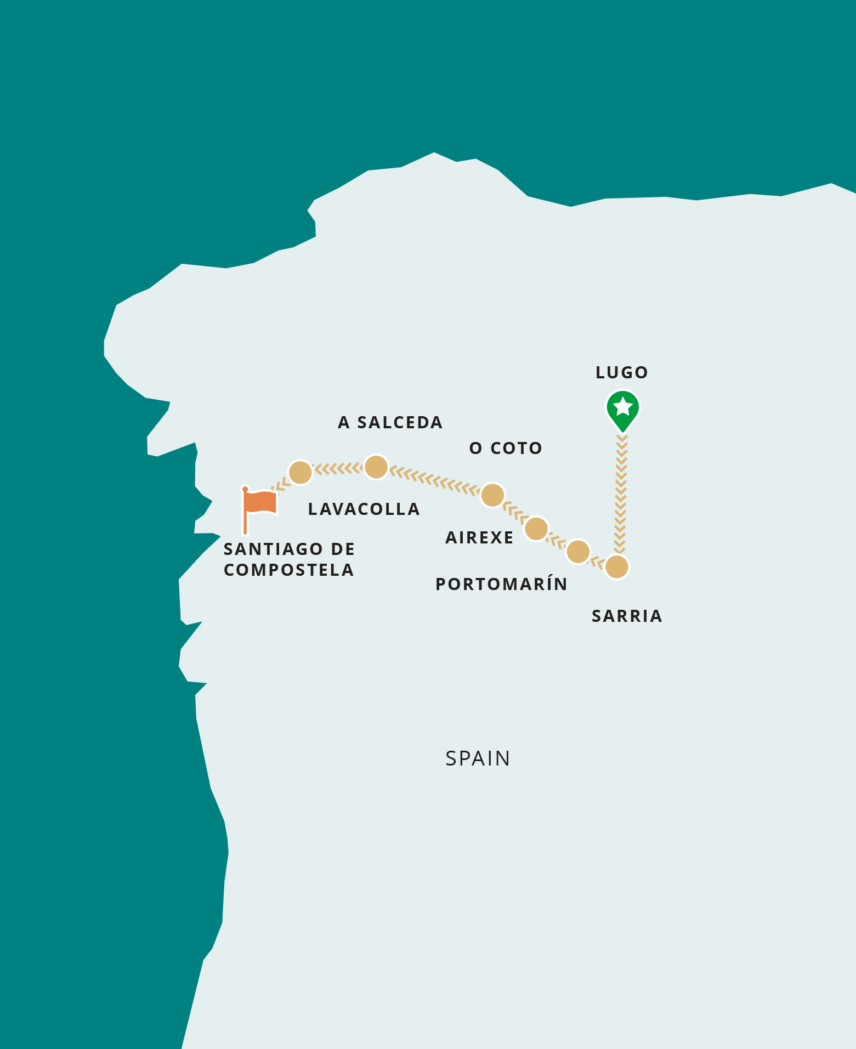
Trip Overview
Departures
Click for Dates + Prices
Duration
9 Days
Activities
Cultural
Hiking
Physical Rating
Moderate–Challenging
Be the First to Know
Interested in this trip? Get on the list for exclusive information and updates.


Finding Your Way
The legendary Camino de Santiago is a pilgrimage designed to stretch both your mind and hamstrings. “The Way” will stir all your senses as we follow the historic route as it curves through the verdant northwest coast of Spain. In the company of like-minded women, we will explore the final 67 miles (108 km) of the Camino at a pace that encourages reflection over leisurely café con leches in the morning sun and restorative stays at welcoming rural hotels en route.

Walk in a Brave New Direction
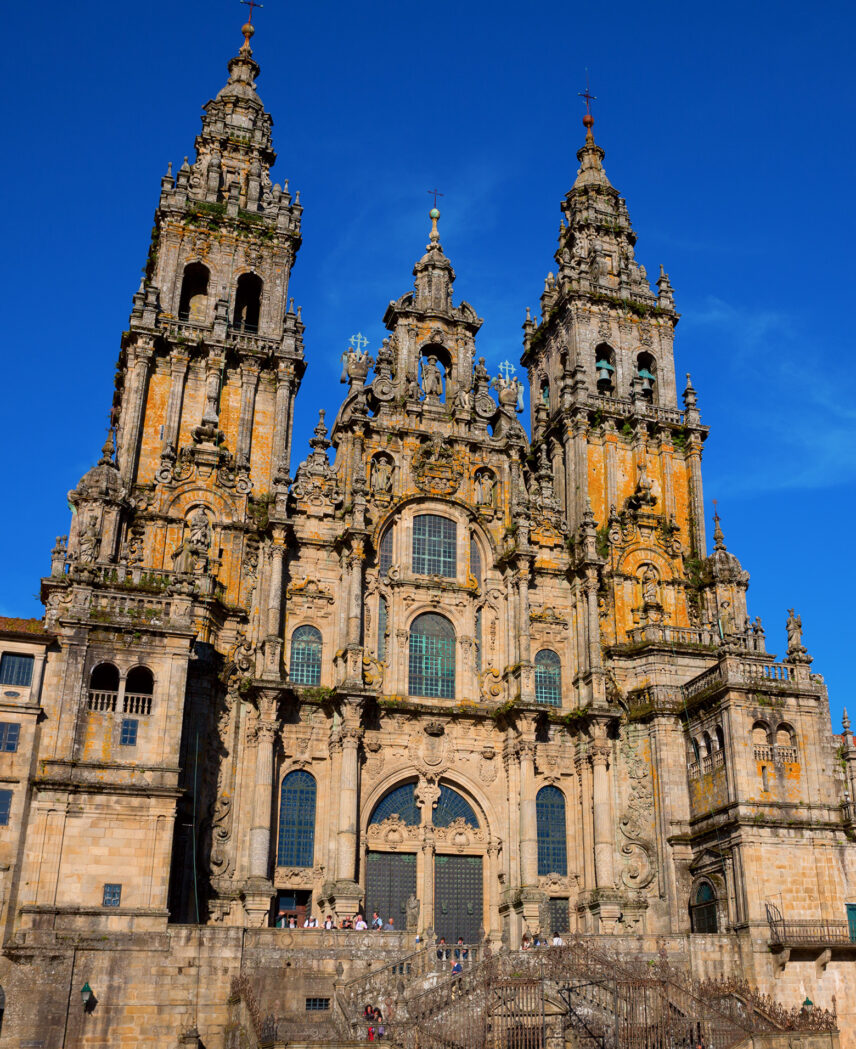
A Physical, Mental and Spiritual Commitment
This relaxed nine-day itinerary allows for complete immersion and soulful meditation in the ever-changing landscape of eucalyptus-perfumed forests, sleepy pastoral villages, imposing churches and limestone architecture that are synonymous with this UNESCO World Heritage site. Fuelled by impromptu tapas shared with new friends, the distance is often forgotten over easy conversation and the rhythm of footfalls. Receiving the official Compostela passport stamp in Santiago is a cherished moment that will forever unite us.
From the start, everything about this trip was magical. The office support was timely and informative. Our guides, Raquel and Mary Kay, were the best! They were friendly, knowledgeable, compassionate, empathetic, smart, and fun. I’d go on another trip with them as guides in a heartbeat! The Camino itself was amazing—there were hard days, hot days, rainy days, and good days, but throughout it was magical…Thanks for a memorable and fulfilling experience.”
Kathleen M.
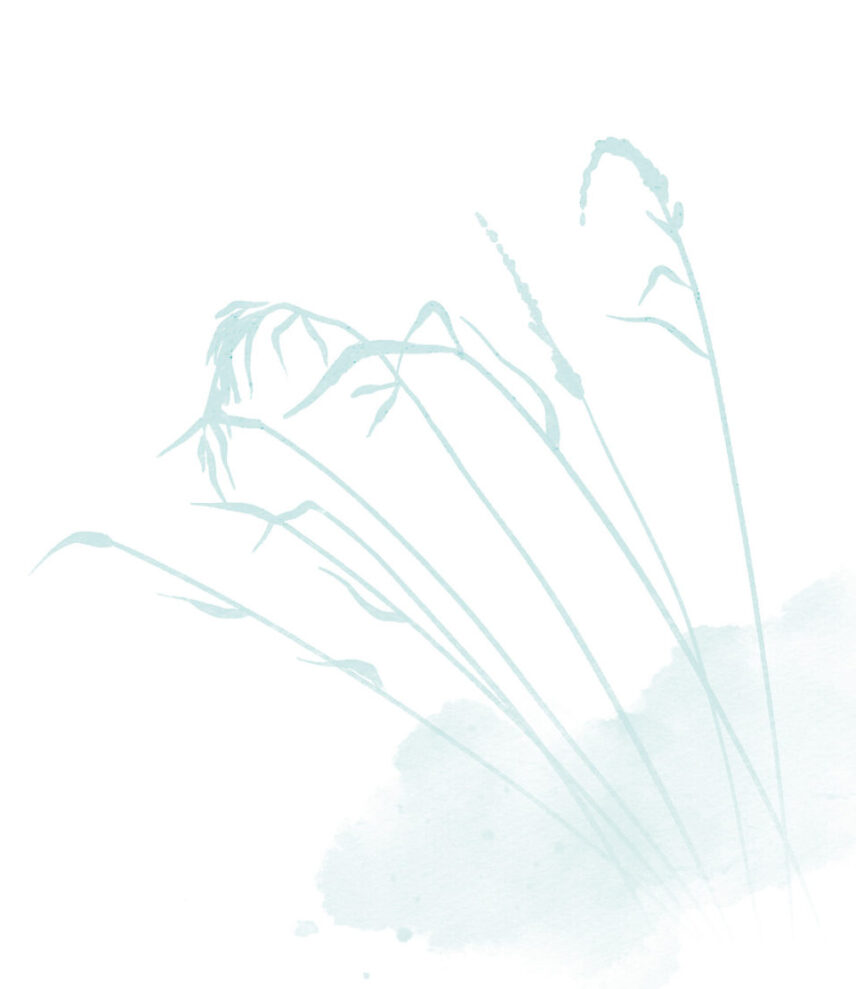
Itinerary
-
Day 1
Touchdown in Lugo
Tempting Tapas
Our Wild Women pilgrimage begins! Double-knot those shoelaces! Lugo (formerly known as Lucus Augusti) is the only city in the world to be surrounded by still-intact third-century Roman walls.
We meet in the hotel lobby at 6 p.m. and ease into the Spanish panoramas—it’s a designated UNESCO World Heritage Site of Gothic churches, cloisters, dramatic towers and iconic gates. At a lively local cafe, we discover the irresistible side of Spain: the edible one! Yes, we’re talking tempting tapas and vino tinto (red wine). To acclimate, it’s best to absorb the colorful atmosphere of this cosmo city by people-watching and tasting what lies ahead.Included Meals
Dinner
Accommodations
Hotel Mendez Nuñez
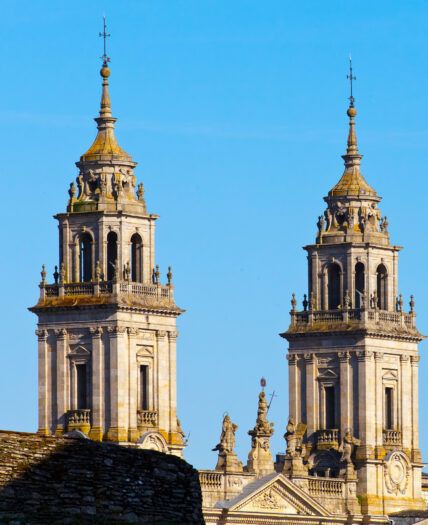
-
Day 2
Sarría
Following Scallops and Arrows
We meet at 9 a.m. and board a bus for a 40-minute ride to Sarría, where we will officially begin our Camino de Santiago pilgrimage together. Our eyes will soon be alert and adept at finding the sometimes surreptitious yellow arrows and scallop shells that indicate the Camino route through the storied Galicia region. The last 62 miles (100 km) of the 491 mile-long (790 km) Camino is well populated as pilgrims must walk at least 62 miles to qualify for the coveted Compostela stamp.
The Camino knows no age, gender, geography, race or skill level. Different languages and landscapes converge in the energy of “The Way” and the fever pitch is palpable! A support van will be available if you would like assistance on any part of this journey. Emotional baggage can be heavy enough; let us help you with your physical load!
Included Meals
Breakfast and dinner
Accommodations
Casa Roan or similar
The Hike
11 miles (18 km)
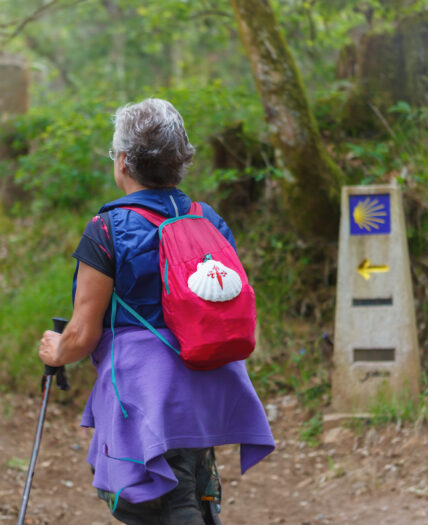
-
Day 3
Portomarin to Airexe
A Summit for Our Vibram Soles
Starting in Portomarin, we marvel at the relocation of the entire city! When the Miño River was dammed in the 1960s, the original village location was flooded and larger buildings were moved higher up the mountain. And we think moving to a new house or apartment is a big deal!
Later, we leave the urban rumbles and congestion behind as we cut through the magical woods and to the high point (and possibly highlight of the day): Sierra Ligonde. History seeps in as the Camino passes by ancient pilgrim hospices (back when a horn of wine cured all). Summit in Airexe where we can pull off your merino wool socks for the day. Our work here is done!
Find a seat on the group shuttle back to our hotel for an evening of reflection and relaxation.
Included Meals
Breakfast and dinner
Accommodations
Casa Roan or similar
The Hike
10.5 miles (17 km)
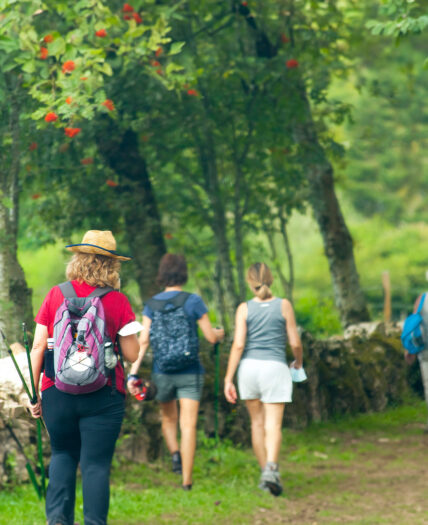
-
Day 4
Airexe to O Coto
Hamlets and Hamstrings
We begin our day royally! The town of Palas de Rei was trendy once-upon-a-time for Galician nobility and the likes of an eighth-century Visigoth king. After a good dose of caffeine and perhaps a divine slice of the famous tarta de Santiago, get ready for the twists and turns of the day. We will walk through San Xulian, a distinct Camino hamlet with a traditional 12th-century church and trail shaded by tree canopy over two river valleys.
At day’s end, we will be magically transported to our hotel for an indulgent shower, restorative dinner and dreamy sleep.
Included Meals
Breakfast and dinner
Accommodations
Casa Roan or similar
The Hike
10 miles (16 km)
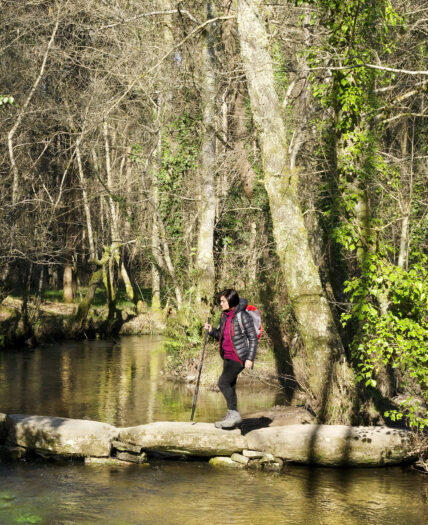
-
Day 5
O Coto to Castañeda
Pints and Pulpo
After breakfast, the sun will be on our shoulders onward to Leboreiro. This village and the medieval hamlet of Furelos are both showstoppers with their storybook bridges. Artists and poets would kill for inspirational views like these!
Later, in Melide, we can drop our daypacks and experience the famous pulperia. Galicia has many gourmand specialties, but the pulpo Gallego (steamed octopus) is a rite of passage.
After lunch, the Camino rises and falls, splitting through tiny villages and skyscraper forests until Castañeda. Here, limestone was carried from Triacastela and fired in the kilns before being taken to Santiago to build the mighty cathedral. If your pack is feeling heavy, be glad it’s not limestone you’re carrying!
Included Meals
Breakfast and dinner
Accommodations
La Casona de Nene/Casa do Cabo or similar
The Hike
10.5 miles (17 km)
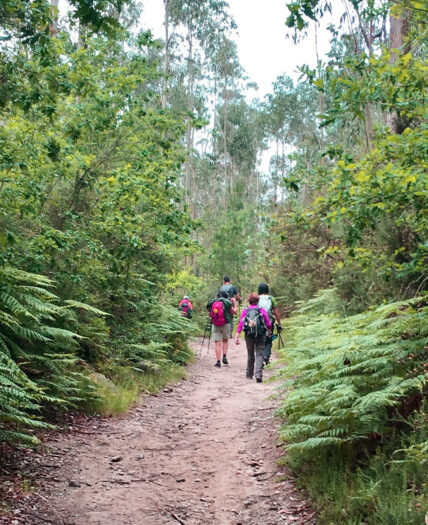
-
Day 6
Castañeda to Salceda
Bosom-shaped Cheese
Rising and shining is easy with the magnetic pull of Santiago under our feet. After a shuttle back to the trail, we lean into a challenging climb and descent. Located on the banks of the River Iso, Ribadiso is home to the oldest albergue (hostel) on the Camino (formerly a 15th-century pilgrim hospital). After a History 101 lesson, climb to the town of Arzua, famous for Tetilla, a bosom-shaped cheese. Really! We can also ask our guide about the tall tale of Tetilla.
In the afternoon, we walk through sweet hamlets, inhale the fragrance of eucalyptus forests and run our hands along ancient moss-covered stone walls.
We can rest our Fitbits in Salceda, where the shuttle will take us back to our hotel and pillow.
Included Meals
Breakfast and dinner
Accommodations
La Casona de Nene/Casa do Cabo or similar
The Hike
11.8 miles (19 km)
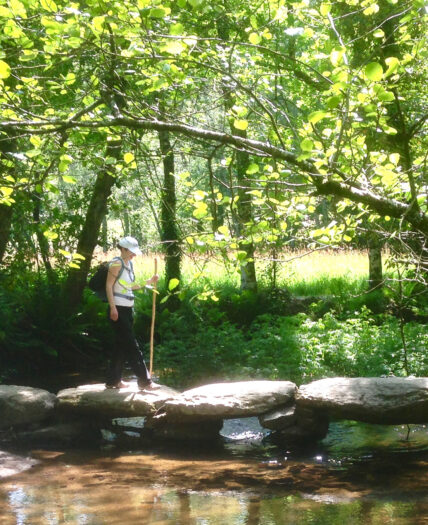
-
Day 7
Salceda to Lavacolla
In the Shadow of Santiago
As the Pet Shop Boys sang in 1993, “Go West!” Descending westward from Alto de Santa Irene, through a sentry of eucalyptus trees and the villages of Rua and Amenal, we get charged up for the final climb of the route!
Skirting around the airport below the jetstream-streaked sky, we will arrive in Lavacolla. Legend has it that pilgrims would bathe in the shallow stream to arrive in Santiago clean in spirit and body.
Santiago is just around the corner and an evening spent swapping stories and laughs together will elevate the anticipation!
Included Meals
Breakfast and dinner
Accommodations
Xan Xodo or similar
The Hike
10.5 miles (17 km)
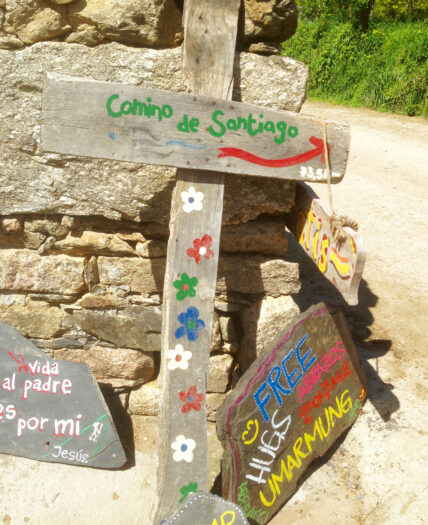
-
Day 8
Lavacolla to Santiago de Compostela
Take It in Stride
The last day of the Camino is always one of mixed emotions. We take it all in stride and let our minds revisit all the colorful days behind us.
Today we climb from Lavacolla to the famed “Mount Joy” (Monte del Gozo) where, if we are lucky and not daydreaming or busy gabbing, we will catch our first tingle-inducing glimpse of the cathedral of Santiago’s towers.
Unbelievably, our Camino journey ends at the steps of the cathedral today.
Shine up your hiking boots, sniff around for your freshest-smelling dry-fit shirt, charge your phone and get ready to gather for a well-deserved celebratory dinner with your fellow Wild Women pilgrims.
Included Meals
Breakfast and dinner
Accommodations
San Francisco or similar
The Hike
6.8 miles (11 km)

-
Day 9
Buen Camino
Walking Ahead
After a leisurely breakfast of recounted stories and laughs, a local tour guide and historian will probably ask us to “shhh” for a while as she shows us the most impressive sights of the city and cathedral on a two-hour guided walking tour. It might be difficult to believe, but we are going to miss spending our days simply walking!
Say goodbye to your newfound friends and start planning your next walk around the world together!
If you’re not extending your stay (which is highly recommended), you should book your flight out of Santiago-Rosalia de Castro Airport (SCQ) after 3 p.m. today.
Included Meals
Breakfast
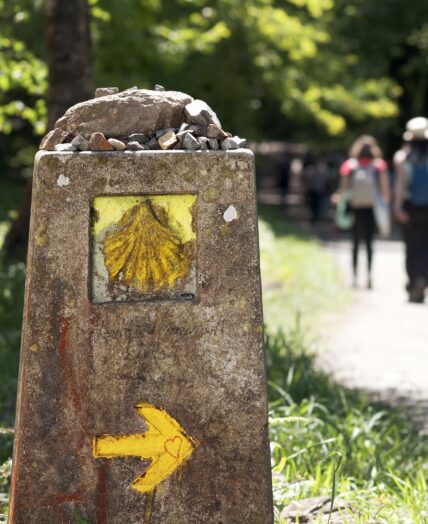
Take a Deeper Dive
Want all the details in one handy package? Download the full itinerary here.

What’s Included
- All breakfasts and dinners
- A private driver with van support for the entire hike
- Eight nights’ accommodation in thoughtfully restored farmhouses, family-run Pazos, stately Galician manor homes and hotels
- A local Wild Women guide, who speaks English and Spanish, to help navigate menus and pronunciations!
- Tips for guide(s) and all applicable taxes
What’s Excluded:
- Your flights, which should be booked in and out of the Santiago-Rosalia de Castro Airport (also referred to as Santiago de Compostela Airport, Spain)
- Lunch is also not part of the package, but there are several stores along the route for picnic fixings or a sweet pick-me-up. There are small bars that cater to pilgrims and a few pop-up food trucks as well. The van will also be stocked with hit-the-spot snacks and water.
Please Note:
There are limited vegetarian and vegan options on this itinerary. Pack a few protein bars to fill the gaps!
Consider packing carry-on luggage only.
All applicable taxes are included in the trip price.
Optional single private upgrade, subject to availability.
Itineraries may be subject to change without notice due to weather and other environmental conditions. Please review our Booking Terms.

Trip Details
Know Before You Go
Click HERE for all of the logistical details you’ll need to know prior to departure—including the packing list, arrival and departure details and suggested tipping information.
This trip starts in Lugo, Spain (closest airport is Santiago de Compstela (airport code: SCQ), and finishes in Santiago de Compostela (airport code: SCQ).
Accommodations
Accommodations are in thoughtfully restored farmhouses (Casa Rurales), family-run Pazos, stately Galician manor homes and hotels. Most are located in small towns or villages a short distance from the Camino route. There will be a group transfer at the beginning and end of each day. All rooms have private bathrooms but the smaller inns have no phones or TVs in the room. We’re guessing that you won’t even notice!
The Wild Women Way
If you’re wondering how we roll, it’s together. The Wild Women Way is our modus operandi, our mantra and our rock solid foundation. You can learn more about our Wild Ways HERE.
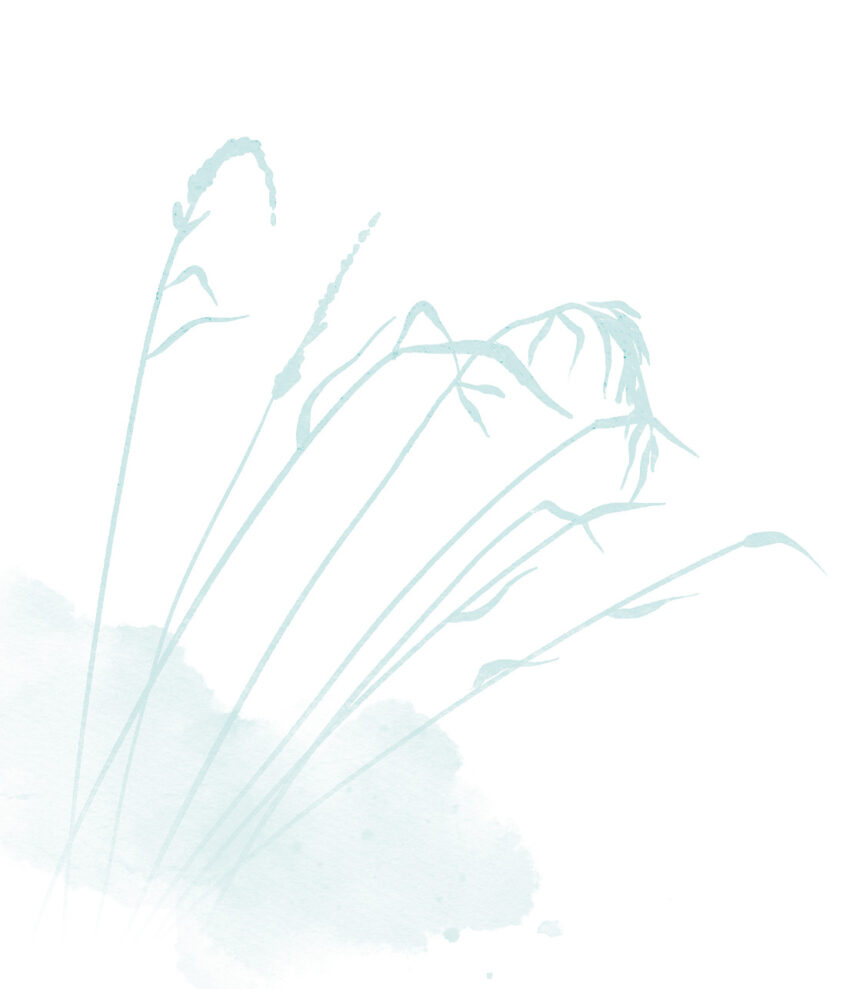
How We Support You
Ready for a big adventure? We’re in it together. On this trip, we hike many hours a day for multiple days, though we do so at a leisurely pace—this isn’t the trip for those looking for an endurance race. Yes, it’s a challenge, but you’re never alone. Like thousands of women before you, you’ll draw on strength you didn’t know you had and come out feeling like the goddess you are. And if you need a bit of extra support, we have it: a private driver and van, where you can store your luggage at any time during the hike.
Like all our trips, this trip can be scaled to suit different abilities and comfort levels. If you have concerns or reservations about your ability to complete or enjoy this trip due to any physical or medical reasons, please contact us and let’s talk about it.
What the Trip Entails
This is an active adventure trip. We would like you to be comfortable with the following:
- Hiking over uneven terrain for 2–6 hours, covering 2.4–7.5 miles (4–12 kilometers), gradually gaining up to 1,968 feet (600 meters) of elevation
- Walking for 9–15 miles (15–24 km) a day, rain or shine, with van assistance
- Walking with a 13 to 20L daypack over everchanging and sometimes challenging terrain
- European dinners are typically served later in the evening–it’s not uncommon to eat at 8 p.m. or later
- Physical Rating: Moderate – Challenging (Be prepared for active physical activity. Trips average 5 to 8 hours of physical activity most days, and depending on the shape you are in, they typically require activity specific training ahead of the trip.)
